"The passenger pigeon needs no protection." The Select Committee report read. "Wonderfully prolific, having the vast forests of the North as its breeding grounds, traveling hundreds of miles in search of food, it is here today and elsewhere tomorrow, and no ordinary destruction can lessen them, or be missed from the myriads that are yearly produced."
Ten years later, the state of New York suddenly panicked and passed a law protecting the passenger pigeon within its borders. Until very recently, the region had regularly been visited by those mega-flocks, now they had become quite rare.
It was way too late for that piece of legislation. That entered the statute books in 1867, but by 1868, no wild passenger pigeons were to be found anywhere in the state.
By the latter part of the 19th century, it wasn't just entrepreneurs seeking to shoot these increasingly endangered birds. Hunting for sport had never really factored until now, but it emerged as the favorite pursuit of a growing 3% of the country.
These were people rich enough never to have had to hunt for food in their lives, and who could also afford musket shot and bullets to waste. The name of the game was to kill as many creatures as possible, then to either prepare the remains for display or leave them to rot.
They were also rich enough to lobby politicians, whenever laws were proposed to interfere with their sport. When Massachusetts rushed to pass legislation, in 1870, to stop the killing of passenger pigeons, lobbyists for the sportsman hunters forced a concession. There would be an 'open season' each year, when the birds were fair game.
The lobbyists were even more successful in Pennsylvania in 1878. There only the nesting sites were protected by law.
What nobody yet realized was that it was already too late. The passenger pigeon population had now dwindled beyond the point of no return. The birds wouldn't breed unless they were in colonies numbering in the thousands, and the mega-flocks were no more.

















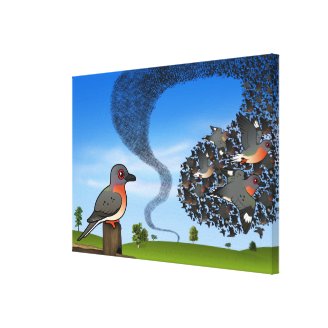
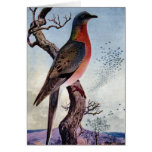


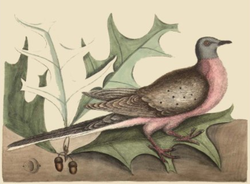

 St Tydecho's Churches in West Waleson 09/03/2014
St Tydecho's Churches in West Waleson 09/03/2014
 Goodies for an Outlander Premiere Partyon 03/06/2015
Goodies for an Outlander Premiere Partyon 03/06/2015
 Holocaust Memorial Day Interview with Rainer Höss, Grandson of Rudolf Architect of Auschwitzon 01/24/2015
Holocaust Memorial Day Interview with Rainer Höss, Grandson of Rudolf Architect of Auschwitzon 01/24/2015
 Romantic Valentine Gifts for an Outlander Fanon 01/16/2015
Romantic Valentine Gifts for an Outlander Fanon 01/16/2015

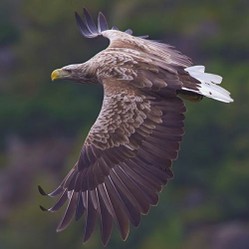
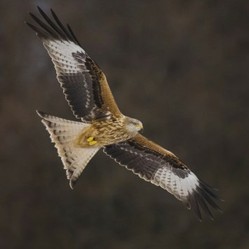
Comments
Unfortunately, there's too much evidence to the contrary for me to attempt to argue that one. :(
Thats how the human mind seems to work! Jo
Oh gosh! I hadn't even thought of that. -.- (Triple sigh)
I hope people don't start thinking that it isOK to make animals extinct because all we have to do is clone them back again. (Double sigh)
Ember - Thank your for your insight into these issues. I did read something about there being enough DNA on file for the passenger pigeon to be cloned back into existence. But thousands would have to be cloned, because they wouldn't breed else. I did squirrel that away as a potential article for you to tell us all about. :D
Jo - Wow! That is downright ghastly. *sigh*
Hi Jo,
Have you seen this? http://www.hoax-slayer.com/denmark-wh...
Men gather on the shore to kill the beached whales. Ideally, most of the whales will strand far enough up on shore that it is unnecessary to secure them. However, those remaining in the shallows must be secured and hauled closer. Traditionally, this is done by driving a steel hook, or gaff, with a rope attached to it into the back of the whale. It is just ghastly! Jo
Wow, I'm surprised they went from an abundance to extinction in only 50 years. I feel like that is such a short amount of time. I don't actually know, though.
Lonesome George, a giant Galapagos tortoise died a couple years ago. I'd been following his story for years so that was very sad news for me. He was the last of his kind, result of hunting. Conservationists tried to get him to mate for a close-as-possible cross-species, but were unsuccessful.
I had a roommate in college whose home I visited once. They had a family room full of taxidermic exotic animals, which her grandfather paid thousands to hunt. I was shocked to learn that, for a price, it is legal to hunt endangered animals (example, polar bears. Still. :|). That really pisses me off. Apparently we're still struggling to learn our lesson, because: money. >:|
Although, our disruption of habitats, deforestation, etc., are doing a great deal of damage these days. We're likely losing more species to that than we ever did hunting. And, it is too late for many species.
If it is a natural selection that leads to a decreased vitality/eventual extinction of an animal- while sad- it is still a part of nature. When it is directly our fault, whether we caused a shift in an ecosystem (we are well on our way to an ecosystem collapse with the Great Reefs, which would endanger/drive to extinction many, many species), over-utilization of natural resources, or because of something like over-hunting, I think it is really just incredibly, unbelievably awful on our part.
Less sad-- a success story! Sea otters were hunted for their fur, which led to their endangerment (few hundred thousand, at least, to just over a thousand at lowest). Efforts in the past 100 or so years have seen great advances in colony sizes, and total number of colonies. California sea otters are still struggling, and overall sea otters are still endangered. There's a slight worry concerning the decreased genetic diversity, because there were so few remaining at their low. If a sea otter plague of sorts were to hit, the chances of a significant proportion of their pop being genetically resistant is painfully slim. But, as of now, they're growing and headed out of endangerment! Yay! One of the areas the CA otter was successfully reintroduced was Monterrey Bay. When I'm in the area, I have to go see them. The aquarium that supports them there is super rad, and they do a LOT in terms of conservation efforts, so I like supporting them. :D
Ologsinquito - Oh wow! Thank you. :D
WriterArtist - Until I started looking into this, I had no idea that such issues were happening in the world. I thought that the great extinctions all happened in the 19th century, when Europeans were being very arrogant and 'collections' were in fashion.
It is a truly sad thing that it's still going on.
This is a beautifully written story about a sad chapter in American history. You vividly described the multitude of passenger pigeons and how dense there were in the skies. This is going on My Wizzley Writing Board.